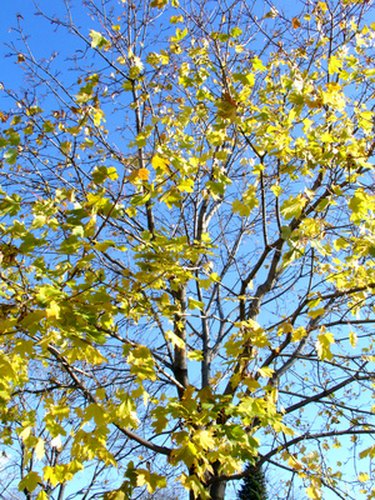
The Norway maple (Acer platanoides) is a tree common to many northern climates. It is a hearty tree that can grow in small plots, making it a good tree for urban landscapes. Norway maples tolerate many different types of soil and are resistant to air pollution.
Size
Video of the Day
According to the Plant Health Care Program, Norway maples typically grow to a height of 50 to 75 feet. They have a rounded, dense crown that produces large amounts of shade.
Video of the Day
Habitat
The Norway maple is adapted to extremes in temperatures and soils. It grows well in sand and clay. According to the U.S. Forest Service, Norway maples do best in full sun and can withstand hot and dry conditions.
Geographical Locations
Norway maples originally came from Europe and Western Asia but are now found across the United States. States in which the Norway Maple is considered an invasive species include: CT, DC, VA, DE, VT, IL, WI, IN, MA, MD, ME, MI, NH, NJ, NY, OR, PA, WV and TN.
Invasive Species
The Norway maple has been banned in Massachusetts and New Hampshire because it tends to inhibit sapling growth in other species. According to the Delaware River Invasive Plant Partnership, Norway maples release chemicals into the soil that discourage the growth of other plants and can result in the loss of native species in certain areas.
Control
The National Park Service recommends against planting Norway maple. To combat existing populations, they suggest pulling up new saplings when the soil is wet, to ensure removal of the entire root system. They also recommend cutting down large trees and using herbicides, when necessary.